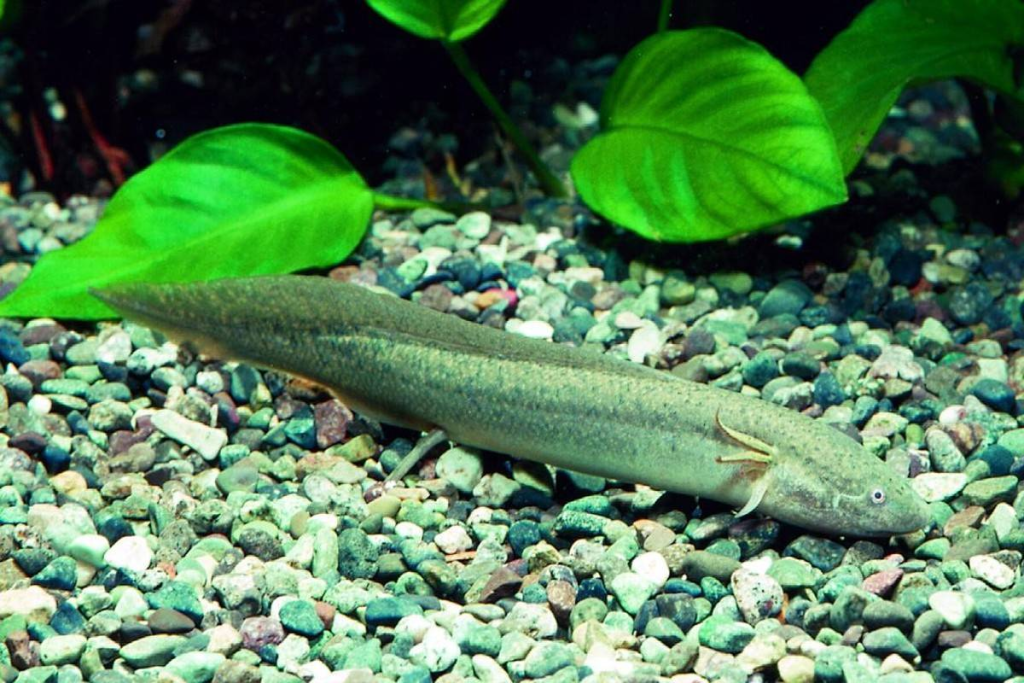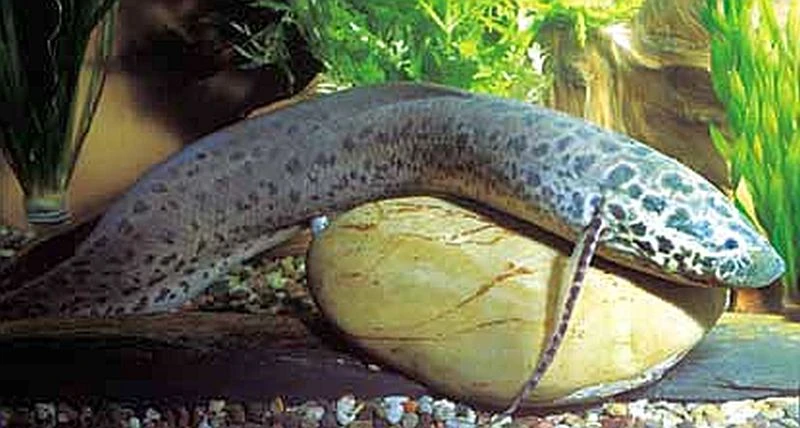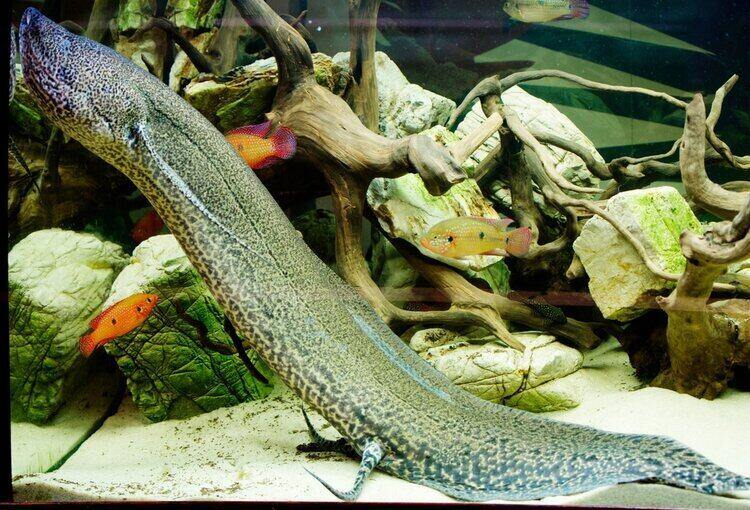Imagine being a fish that doesn’t need to live underwater. It might sound unbelievable, but there is indeed a species that defies the typical nature of fish—enter the African lungfish. This extraordinary creature is not only unique in its ability to survive without water, but its entire existence challenges what we know about the animal kingdom. Living in the rivers and lakes of sub-Saharan Africa, the lungfish is an incredible example of nature’s ingenuity.
What Is the African Lungfish?

The African lungfish, scientifically known as Protopterus, is a genus of fish that hails from the freshwater systems of sub-Saharan Africa. There are a few species of lungfish, but they all share certain key characteristics that make them stand out in the aquatic world.
Physical Characteristics of the African Lungfish
One of the first things you’ll notice about the African lungfish is its appearance. These creatures range from 44 to 200 cm (roughly 17 to 79 inches) when fully grown. With their elongated bodies, they resemble eels more than traditional fish.
Their fins also set them apart from other fish. The pectoral and anal fins are thin and thread-like, while their dorsal and caudal fins are fused into a single structure. These physical adaptations give the lungfish a fluid, undulating movement when swimming, much like eels. Additionally, their bodies are covered in soft scales that protect them during their time underwater.
The unique morphology of the lungfish doesn’t end with its fins. When these fish are not swimming, they are capable of crawling along the bottom of their aquatic habitats using their pectoral fins, another feature that makes them quite different from typical fish species.
How Do African Lungfish Breathe?
What truly sets the African lungfish apart from its aquatic counterparts is its respiratory system. Unlike most fish, which rely on gills to extract oxygen from the water, the African lungfish has developed a highly specialized way of breathing.
As its name suggests, the lungfish can extract oxygen directly from the air, similar to land animals like humans. While in the water, the lungfish will occasionally come to the surface to breathe air. If they are underwater for too long, however, they can suffocate, which highlights their reliance on atmospheric oxygen.
Surviving Harsh Conditions: The Secret to the Lungfish’s Survival
The most extraordinary trait of the African lungfish lies in its ability to survive during Africa’s harsh dry seasons, which can last for months at a time. During this period, many rivers and lakes in sub-Saharan Africa dry up, leaving the lungfish with little access to the water that it depends on for survival.
Rather than succumbing to the dry conditions, the lungfish has evolved an ingenious survival mechanism. It is capable of burrowing into the mud of the dried riverbed and entering a state of dormancy. This process allows the fish to survive without water for months or even years.
The Fascinating Cocoon: How Lungfish Survive in Dry Conditions

When the African lungfish senses that the water levels in its habitat are receding, it begins to dig deep into the mud using its powerful mouth and gills. By eating the mud and expelling it through its gills, the lungfish can create a burrow deep enough to escape the heat and dry air above. Once the fish reaches the required depth, it secretes a layer of mucus from its mouth, which hardens to form a protective cocoon around its body. This cocoon prevents the lungfish from drying out during the long dry season and exposes only the fish’s mouth, which remains open to allow air intake.
This cocooned state is a remarkable adaptation, allowing the fish to survive extreme dehydration and endure the dry months until the rains return. During this period, the lungfish is essentially in a hibernation-like state, but its survival instincts ensure that it can remain alive until its environment becomes livable again.
The Role of Lungfish in the Ecosystem
While the lungfish’s ability to survive without water is a fascinating trait, it also plays an important role in its ecosystem. In the rivers and lakes of sub-Saharan Africa, the lungfish is both a predator and prey. It feeds on a variety of aquatic organisms, including smaller fish, crustaceans, and invertebrates. At the same time, it is also an important food source for larger predators in its habitat.

Lungfish have a significant impact on the food chain, and their ability to withstand environmental stressors makes them vital to the ecological balance of their ecosystems. Their behavior also demonstrates the delicate interconnectedness of species and how evolution has shaped their survival strategies over millions of years.
A Living Link to Prehistoric Times
The African lungfish’s unique traits also place it in a special category of fish known as “living fossils.” This is because lungfish share many characteristics with ancient fish species that lived hundreds of millions of years ago. These early fish are believed to be some of the ancestors of land-dwelling vertebrates, providing a fascinating glimpse into the evolutionary history of life on Earth.
Lungfish are considered a key species in the study of evolutionary biology. Their unique anatomy, particularly their lungs, reflects the transition of life from water to land, a critical development that paved the way for the emergence of amphibians and eventually reptiles, birds, and mammals.
Conclusion: The Marvel of the African Lungfish
The African lungfish is a remarkable testament to the power of evolution and adaptability in the animal kingdom. With its ability to survive out of water, its unique respiratory system, and its fascinating method of creating a cocoon to endure dry periods, the lungfish challenges everything we thought we knew about fish and their survival strategies.
As one of the only species of fish that can survive without living underwater, the African lungfish is a symbol of the incredible diversity and ingenuity of life on Earth. Its existence serves as a reminder of how, even in the harshest of environments, life can find a way to endure. Whether in the depths of water or in a mud cocoon, the African lungfish will continue to captivate and inspire those who seek to understand the wonders of the natural world.


